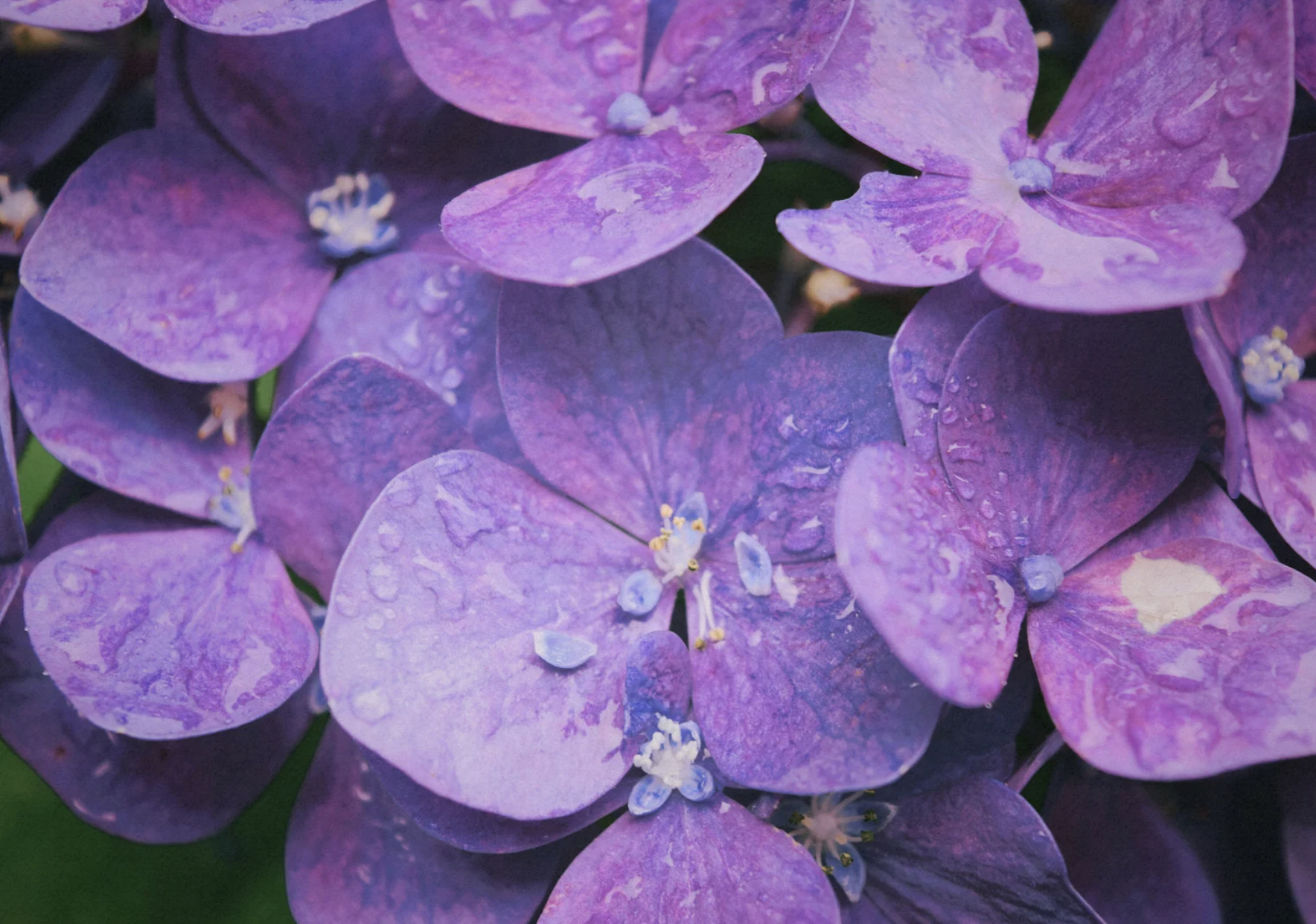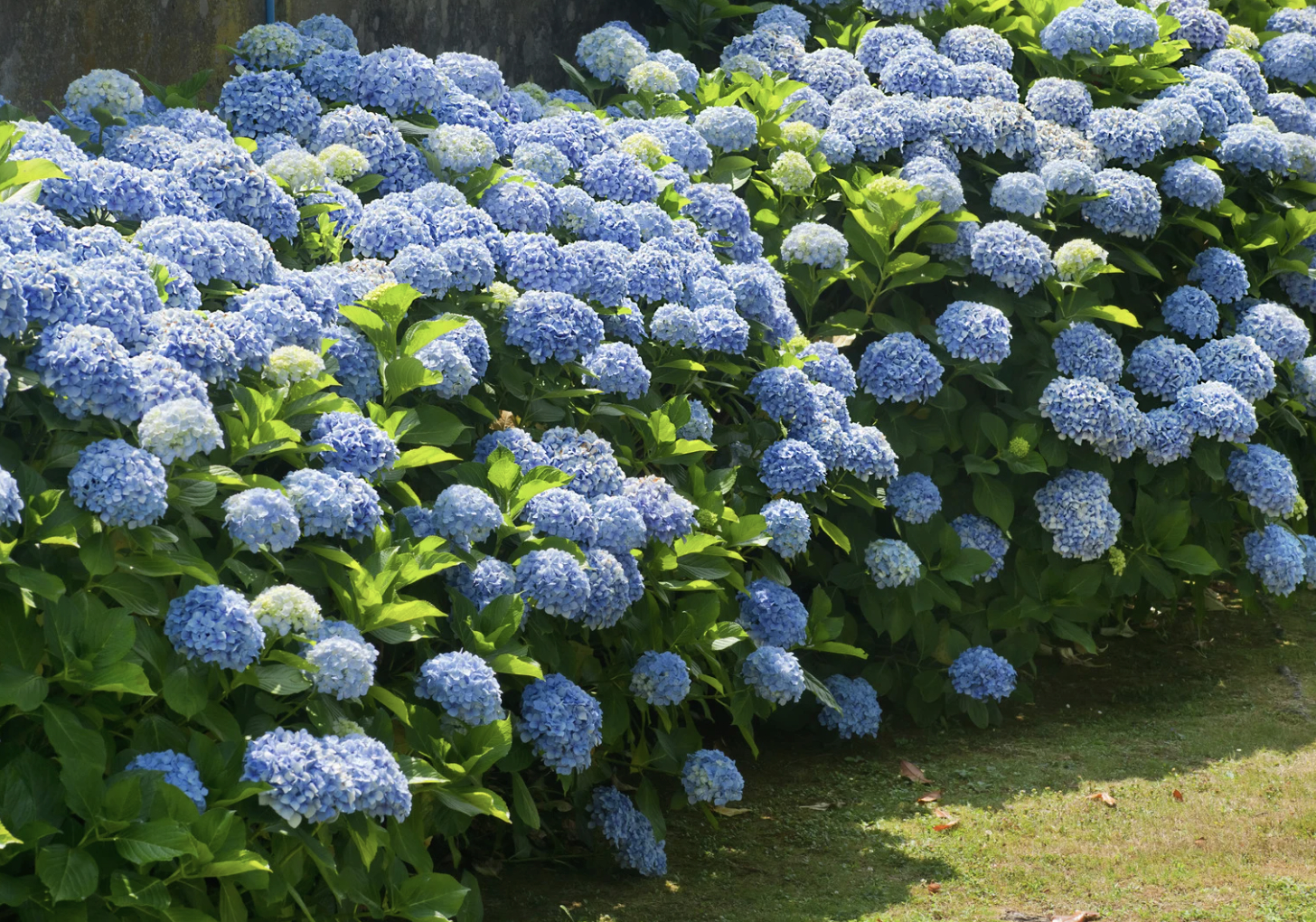4. Feed Only If Needed
If your hydrangeas were fed earlier in the season, they may not need another boost right now. Over-fertilizing in midsummer can promote leafy growth rather than blooms.
Fertilizer guidance:
- Use a balanced or bloom-boosting formula only if your plant is underperforming or showing signs of nutrient deficiency.
- Avoid high-nitrogen lawn fertilizers near your hydrangea beds, as they can encourage too much foliage at the expense of flowers.
5. Stay Ahead of Stress and Pests
Summer brings more than just heat. Humidity, storms, and insect activity can lead to leaf spotting, mildew, or pest pressure.
Care tips:
- Remove damaged or diseased leaves to improve air circulation.
- Avoid overhead watering to keep foliage dry.
- Use neem oil or insecticidal soap at the first sign of pests like aphids or spider mites.
A healthy, well-watered plant is more resilient to both pests and disease, so preventive care goes a long way.
Keep Your Hydrangeas Looking Their Best
With the right care, your hydrangeas can power through the hottest part of the season and keep delivering beautiful blooms into late summer. Visit your closest McDonald Garden Center location to explore our hydrangea selection and get expert advice for keeping your garden thriving all summer long. To stay inspired and grow with us, follow us on Facebook, Instagram, Pinterest, and TikTok to dig into the joys of gardening!


